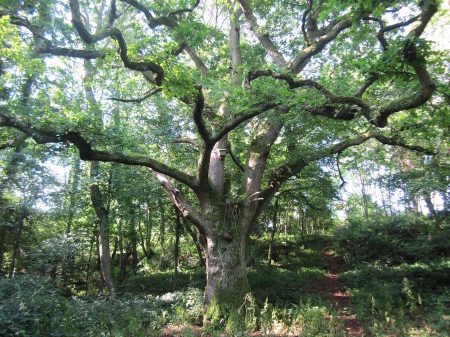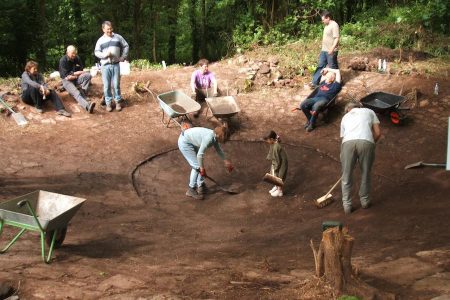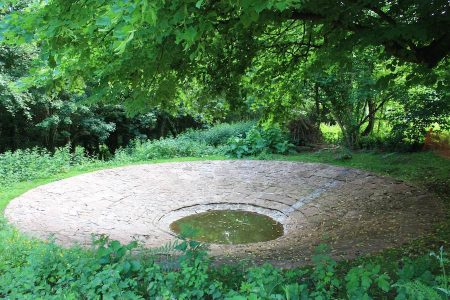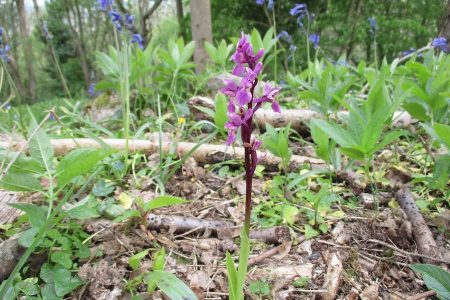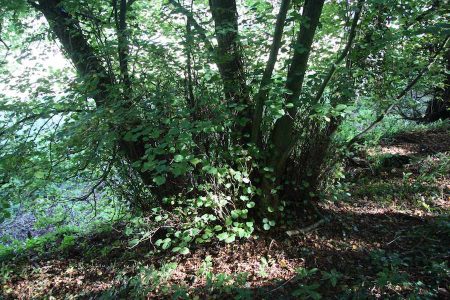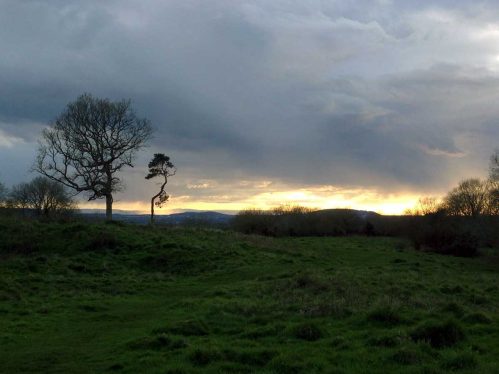
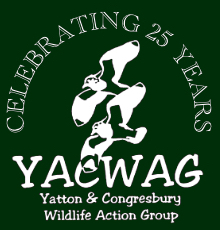
Other nature sites:
Cadbury Hill
______
Cadbury Hill is a small hill sitting between Yatton and Congresbury offering tremendous views of these villages as well as Clevedon, Weston, and across the Severn Estuary to Wales. Upon its summit stands an Iron Age hill fort.
Cadbury Hill
YACWAG has an interest in this wonderful local wildlife resource and promotes its wildlife through advice and guidance, occasional practical workparties, walks and talks and species monitoring and surveying.
GRID REFERENCE: ST442649
OWNERSHIP: Most of Cadbury Hill is owned by North Somerset Council, however, the hill fort at the top, the southern slopes and some of the woodland is owned jointly by Yatton and Congresbury Parish Councils. Although some of the woodland behind the hotel belongs to Double-tree Hilton, it all comes under the Local Nature Reserve and is covered by a Tree Preservation Order..
MANAGEMENT: The northern areas of the hill nature reserve are managed by North Somerset Council. The hill fort and adjoining woodland are managed by Congresbury and Yatton Parish Councils with support from Natural England’s Higher Level Stewardship (HLS) as part of the Rural Development Plan for England (which provides money for projects to improve agriculture, the environment and rural life).
PUBLIC ACCESS: Car park in Henley Lane (free of charge). Numerous paths through woodlands. Horse rider access on designated bridleway. Information boards in car park, and in several key locations upon the hill at its four entrances on public footpaths.
HISTORY & ARCHAEOLOGY: Cadbury Hill is a nationally important site for archaeology. The Iron Age hill fort is a Scheduled Ancient Monument, meaning it is deemed a ’nationally important' archaeological site and is given protection against unauthorised change.
The hill has shown signs of being inhabited during the Neolithic (circa 4000BC to 2500BC) and Bronze Age periods (c. 2500 until c. 800 BC), but the actual hill fort itself was constructed during the pre-Roman Iron Age (c.600BC - 50AD). Furthermore there was a re-occupation during the period c.400-550AD. The remains of Iron Age round houses, built to a circular plan and commonly having a conical roof, can be found within the confines of the fortifications.
Limited excavations on the fort were undertaken in 1958 and again in 1968-73. Evidence was found linking the site to the eastern Mediterranean, as well as other far countries, making Cadbury Hill a "elite settlement" and is today a site of national importance.
In 2009 YACWAG restored a 19th-century agricultural stock pond which for many years had been hidden by undergrowth.
The northern part of Cadbury Hill was quarried for its stone. Known as Henley Quarry, it later became a landfill site, and ultimately became re-seeded grassland. Rabbits now graze this slope to keep the grass short as well as its annual cut in September.
Stay informed about this beautiful wildlife haven, with photos posted throughout the year showing wildlife highlights.
The Yatton Congresbury Claverham and Cleeve Archaeological Trust is a local group of amateur archaeologists working under the guidance of the former North Somerset archaeologist Vince Russett. YCCCART identifies, records and publishes reports on archaeological features in the North Somerset villages of Yatton, Congresbury, Claverham and Cleeve. They have been carrying out surveys on Cadbury Hill for several years.
Wildlife
Wildlife that can be seen on the hill includes: Butterflies – Marbled White, Common Blue, Holly Blue. Moths: 6 spot Burnet Moth. Birds – Green and Great Spotted Woodpecker, Marsh tit, Nuthatch. Bats – Noctule, Serotine, Lesser Horseshoe Bat commute and feed over the hill. Plants: Rock rose, Creeping Thyme, Small Scabious, Common Calamint, Musk Mallow, Ladies Bedstraw on the hill fort; Wood Spurge, Spurge Laurel, Bluebell, Wood Anemone, Primrose, Early Purple Orchid in the woodland. Slow worms are present in good numbers. YACWAG has been monitoring for dormice for several years without yet finding one.
Cadbury Hill contains small areas of Ancient Semi-Natural Woodland. There are some notable veteran Oak trees on the hill, as well as some ancient coppice stools of Wych Elm and Small-leaved Lime in Henley Wood. The plateau comprises unimproved calcicole grassland on Carboniferous limestone, which is home to various species of butterflies and invertebrates. Bats and owls may be seen foraging across the site at dusk. Six hectares of woodland surround the hillfort, dominated by ash and field maple, with some elements of ancient woodland and verteran oak pollards on the upper slopes. The site also includes mesotrophic grassland on the lower slopes, including an orchid slope.
Location
Henley Lane car park
Yatton
North Somerset
Bristol
BS49 4AF
Car parking: The small car park on Henley Lane is free of charge.
© Copyright YACWAG, or original authors. All rights reserved. | Registered charity 1076362 | Privacy policy | Cookie policy | Terms & Conditions |Web design: StanfordGraphics
